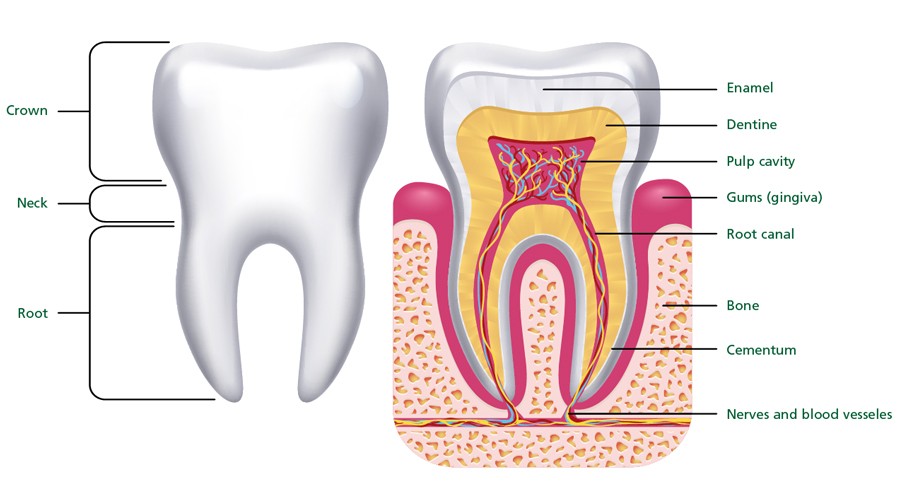When advising customers on dental health, it can help to have an understanding of tooth anatomy and how problems can develop.
The part of the tooth that can be seen above the gumline is called the crown. The protective outer layer is an extremely hard, shiny material called enamel. Inside the enamel is the dentine layer, which is a softer, sensitive tissue that is yellow in colour, compared to the white of the enamel.
At the centre of the tooth is the pulp, which contains blood vessels and nerves. These nerve endings send messages to the brain, such as whether something hot or cold is being eaten, or if a tooth is decayed or damaged.
The pulp goes all the way into the root of the tooth, which is hidden under the gum. Cementum is a thin layer of bony material that covers the root of the tooth and fixes it to the jaw.
Teeth are surrounded by gums (gingiva), which lie over the bones of the jaw and fit snugly around the neck of the teeth. Beneath the surface of the gums is a system of ligaments that anchor the root of the tooth into sockets in the jawbone.
In order to have good oral health, teeth need to be kept clean and free from decay and gums also need to be looked after. However, there are a number of different conditions that may affect a person’s teeth and gums.

